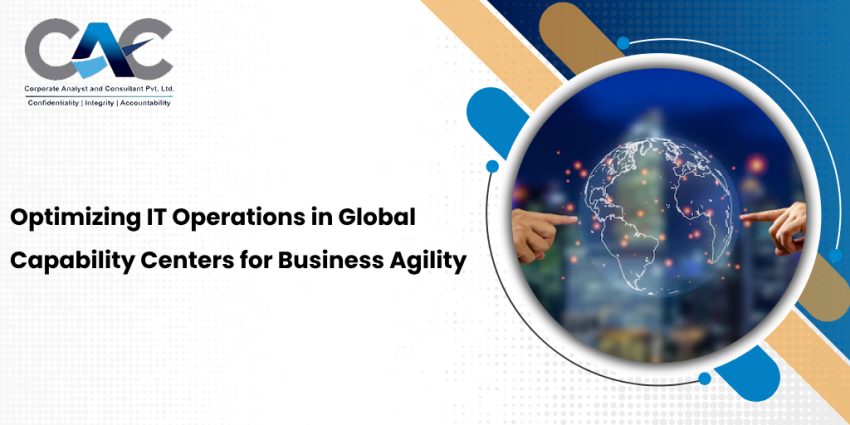Global Capability Centers (GCCs) are now emerging as an organizational ally which multinational organizations rely on to provide a technological, innovation, and efficiency hub. In this context, IT operations in Global Capability Centers are central to provide smooth operation, scalability and flexibility. With companies becoming more agile to meet market demands, business IT operations were centralized as a necessity and not a preference in Global Capability Centers.
The Importance of IT Operations in GCCs
The IT operations in Global Capability Centers do not just deal with systems or offer routine maintenance. They also have the duty of facilitating continuity of services, ensuring security standards and advancing technology adoption. As the GCCs are a long arm of global companies, its IT functions have to be in line with the organizational objectives besides efficiency and innovation. The lack of optimized operations may expose GCCs to slow response rate, increased operation expenses and incapacity of responding to rapidly changing demands.
Key Drivers of Optimization
IT operations within Global Capability Centers need to be optimized, and this is only achievable when it is clear what factors can affect the performance. Some of the key drivers include automation, process standardization, implementation of cloud solutions and active monitoring. Simplifying those spheres, GCCs will be able to guarantee the increased cooperation between teams and the increased speed of resolving operational issues.
The automation is especially valuable when it comes to the minimization of manual work and the problem of errors. System monitoring, incident management and patch updates can both be automated and the IT teams can concentrate on more valuable work. Equally, cloud integration would guarantee scalability, that is, GCCs will be in a position to handle workloads better according to the business demands.
Building Agility through Technology
Business agility requires the speed at which IT operations react to developing business needs. IT operations in Global Capability Centers, in this regard, have to facilitate the flexible infrastructure and resilient processes. Agility is based on cloud-native applications, containerization, and network management. Organizations can provide services and solutions with little disruption when they design systems that are able to scale fast and adapt efficiently.
Besides, there must be a properly organized governance framework. GCC leaders basing IT decisions must be aware of acting with both speed and compliance, where agility does not undermine security and data privacy. This balance can be enhanced by frequent audits, standard procedures and training of employees.
Overcoming Common Challenges
Although the advantages are obvious, there are hurdles in the process of optimizing IT operations in Global Capability Centers. These are outdated systems that restrict the flexibility, absence of skilled human resource, and cultural diversities in different regions. To solve these problems, the gradual process should be applied in which the importance of modernization, upskilling, and collaboration should be equally considered.
Incidentally, investing in training programs will guarantee that the teams will have been prepared to deal with the changing technologies. Fostering partnership between IT and business departments allows to focus the organization through its operations. Meanwhile, gradual shift between the old systems to the new ones can decrease the levels of disruption and also guarantee long term gains.
The Role of Continuous Improvement
Optimization is not a single initiative. Global Capability Centers IT operations should have a culture of continuous improvement. Areas of inefficiency can be pointed out through regular performance reviews, feedback loops, and advanced analytics application. The GCCs are able to track their performance against established benchmarks to keep up with the demands of global businesses and to become better equipped to meet such demands.
Also, efficiency can be increased by implementation of new tools like artificial intelligence predictive monitoring, or machine learning capacity planning. The technologies also help GCCs to foresee challenges before they become hectic hence running their operations smoothly.
Conclusion
Agility is among the most essential facilitators of business success in the dynamic current environment. IT operations within Global Capability Centers must be optimized to make sure that organizations can very effectively respond to uncertainty that will ensure that they are able to adapt, scale, and sustain themselves quickly. GCCs can make their IT functions strategic assets by concentrating on automation, cloud integration, governance, and continuous improvement.
Finally, IT operations in Global Capability Centers are not only important to keep systems running but also in ensuring agility and adaptability that is so relevant to global businesses. With the active growth and development of companies, properly optimized GCC IT activities will act as a guiding principle of sustainable growth.
Also Read: Key Benefits of Setting Up a Global Capability Center (GCCs) in India
















